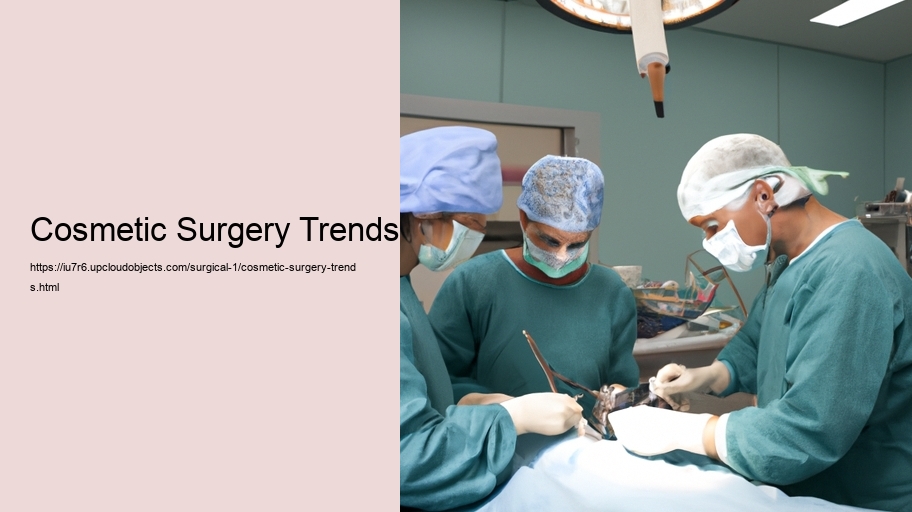Cosmetic Surgery Trends: Navigating the Changing Landscape of Aesthetic Enhancement
The realm of cosmetic surgery is one that has been in a constant state of evolution. As societal norms and technological advancements shift, so do the trends in cosmetic surgery. The quest for aesthetic enhancement has been a part of human history for centuries, but in recent years, the accessibility and diversity of procedures have skyrocketed, influencing how individuals perceive and attain their ideal images.
In the past, cosmetic surgery was often associated with the rich and famous, with procedures like facelifts and breast augmentations dominating the scene. These surgeries were typically invasive, requiring significant downtime and often leaving noticeable scars. However, as the 21st century unfolds, there is a noticeable shift toward less invasive, subtler enhancements that focus on individuality and natural-looking results.
One of the most significant trends in cosmetic surgery today is the rise of non-invasive procedures. These treatments, such as Botox injections, dermal fillers, and laser therapies, offer clients the opportunity to make aesthetic changes without the need for extensive surgery or recovery time. The appeal of these procedures lies in their convenience and subtlety, allowing individuals to return to their daily routines almost immediately while still achieving noticeable improvements in their appearance.
Another trend is the increased demand for procedures that reflect cultural diversity and personalization. People are moving away from a one-size-fits-all beauty standard and instead opting for enhancements that honor their unique features and cultural backgrounds. For example, rhinoplasty is no longer solely about achieving a stereotypically Western nose shape; it's about refining the nose in a way that complements the individual's face while respecting their ethnic heritage.
Body positivity and health-focused trends have also influenced cosmetic surgery. Procedures that were once purely about aesthetics are now often performed in conjunction with health benefits. For instance, breast reduction surgery is gaining popularity not only for its ability to create a more proportionate figure but also for relieving back pain and other discomforts associated with overly large breasts.
Technology plays a pivotal role in the changing landscape of cosmetic surgery. Cutting-edge techniques and tools enable surgeons to perform procedures with greater precision and safety. Robotics, 3D imaging, and high-definition liposuction are just a few examples of technologies that enhance the surgeon's ability to deliver tailored results while minimizing risks and recovery time.
Social media has also had a profound impact on cosmetic surgery trends. With platforms like Instagram and TikTok, there is an increased visibility of cosmetic procedures and their outcomes. Influencers and celebrities openly share their experiences, which demystifies the process and inspires others to consider similar treatments. This has led to a surge in younger individuals seeking cosmetic enhancements, such as lip fillers and microblading, at earlier ages.
A notable concern that arises with these trends is the pressure to attain perfection, sometimes leading to a condition known as 'body dysmorphic disorder' (BDD). With constant exposure to idealized images online, individuals may develop an unhealthy obsession with minor imperfections, which can result in excessive and repeated cosmetic procedures. The ethical responsibility of cosmetic surgeons to recognize and address potential cases of BDD has never been more crucial.
In conclusion, the trends in cosmetic surgery reflect broader cultural shifts towards personalization, non-invasive treatments, technological innovation, and the influence of social media. As individuals increasingly seek to enhance their appearance in ways that align with their lifestyles and values, the cosmetic surgery industry continues to adapt, offering a wide array of options tailored to meet these evolving desires. However, it is essential to approach these trends with a balanced perspective, recognizing the importance of self-acceptance and the potential psychological impacts of undergoing cosmetic procedures. As we navigate this changing landscape, it is the responsibility of both practitioners and patients to foster a culture of informed decision-making and to prioritize health and well-being alongside aesthetic goals.
